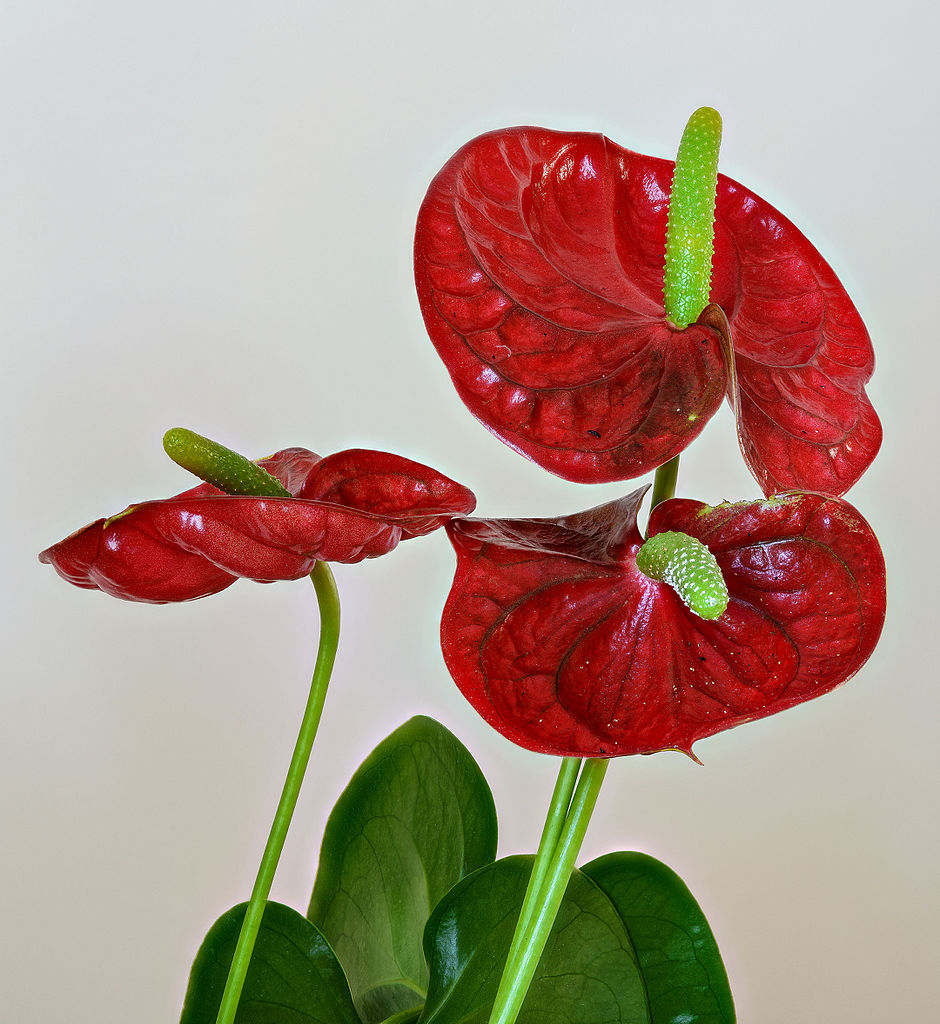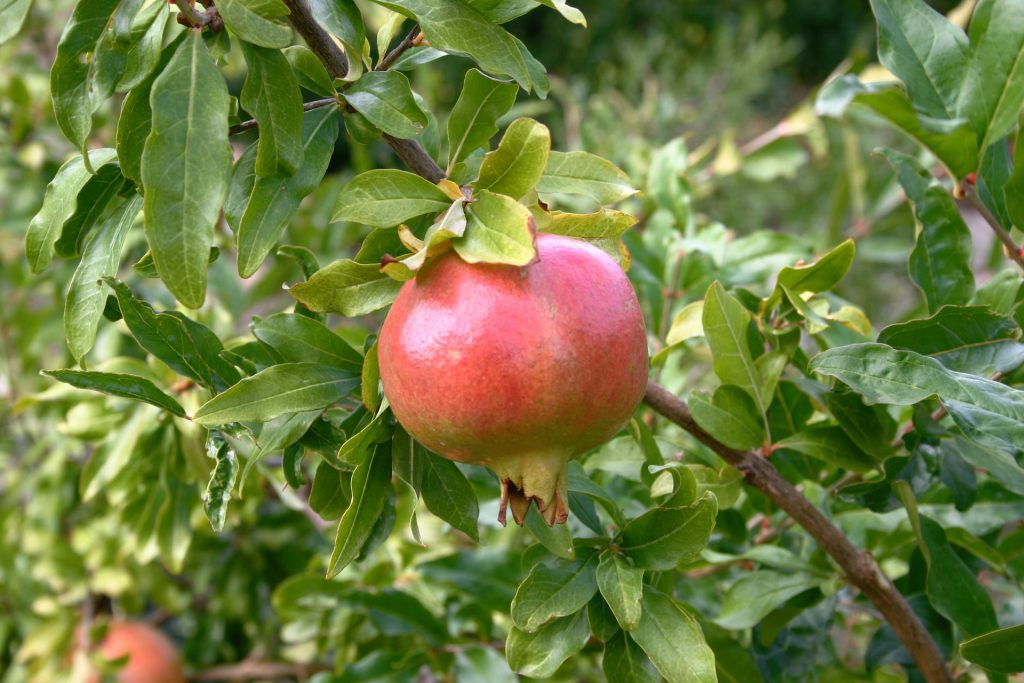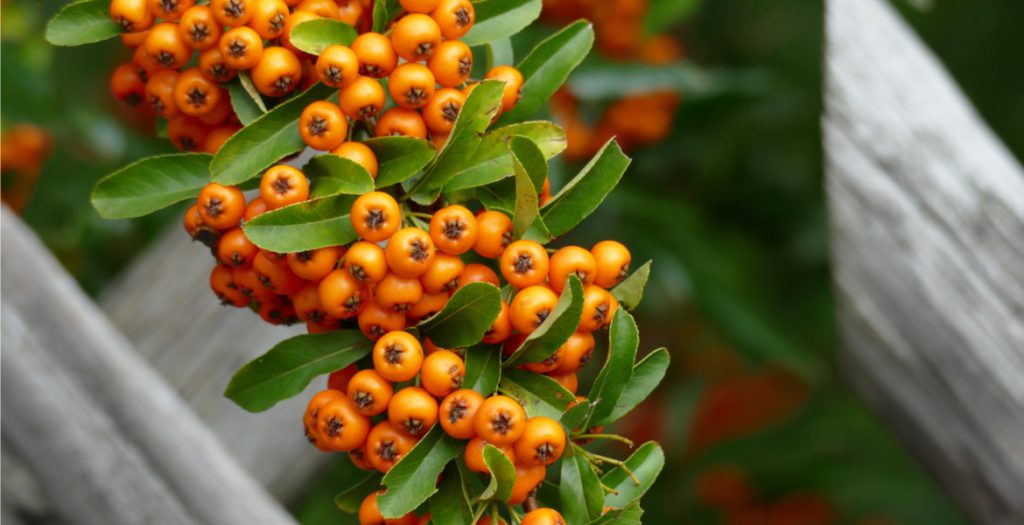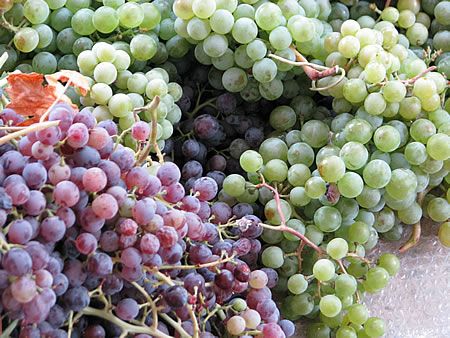Anthurium is a genus of around 1,000 perennial plants native to Central America, northern South America, and the Caribbean.
While they can be grown outdoors in the garden in warm climates, anthuriums are good indoor plants and are more often grown as houseplants or in greenhouses since they have particular care needs. They grow at a slow or moderate growth rate, depending on getting ample light without getting sunburned.
Also called flamingo flowers for their unique tropical shape and bright red, green, and white colors, they can constantly bloom for long periods making them delightful indoor plants year-round. The blooming varieties are distinctive for their colorful, heart-shaped waxy spathes and red or yellow tail-like flower spikes.
Other varieties feature large-leaved, deeply veined foliage.
Many anthuriums are climbers, and all need high humidity and warmth to thrive. Anthurium typically lives about 5 years indoors with proper care but by propagating your plant, you can have a healthy anthurium indefinitely.
Anthurium is toxic to humans and pets.
Anthurium Care
Anthurium plants thrive in bright, indirect light, and they do not like exposure to direct sunlight, except in the winter months or in plants that have been carefully acclimated. Wild anthuriums generally live in temperatures at or above 60 degrees Fahrenheit, and the foliage types prefer temperatures even warmer. If temperatures dip below this level, the plant will suffer.
Potted anthuriums prefer a rich but well-draining potting mix that should be kept moist but not wet. Potting mix tailored for orchids, with a few handfuls of sand and a few handfuls of peat moss mixed in, is ideal.
Many anthurium plants are “epiphytic” in natural settings—they grow on other plants instead of in soil. If your plant fails to support itself, give it a stake or small trellis to climb on.
Light
Indoors or out, anthuriums like sun more than shade. They grow best in bright, indirect light. Avoid direct sun.
Soil
Anthuriums prefer a coarse, well-draining potting mix. An orchid mix with additional sand and peat moss mixed in makes perfect soil for anthuriums.
Water
The soil should be kept slightly moist and never allowed to dry out completely. Set the pot in a tray with rocks or gravel that has water. The plant’s water can drain there and help keep humidity levels higher around the plant. Allow the top of the soil to dry out to the touch before watering again. Indoors, this is about once a week. If outside, during hot days, it can be every two or three days between waterings.
Temperature and Humidity
All species of anthurium are native tropical plants, and mimicking those conditions will give you the best chances for success. This plant prefers high humidity and temperatures between 65 and 85 degrees Fahrenheit. These plants can be grown outside in zones 11 to 12 and will likely perish at temperatures of 40 degrees Fahrenheit or less.
In dry climates—or during dry winter months—mist the plant daily to keep humidity levels high. You may find it necessary to run a humidifier constantly during dry months.
Fertilizer
It is safe and recommended to use liquid fertilizer throughout the growing period of your anthurium. Use a fertilizer high in phosphorus, dilute it to 1/4 strength and feed the plants every week. The phosphorus-rich fertilizer will help encourage your anthurium to flower. The common gardening expression, “Weekly, weakly” applies to how often to fertilize and the strength or concentration of fertilizer to water.
Pruning
When a plant has dying or wilting leaves, it puts its energy into trying to revive those dying leaves. You can help your plant focus its energy on creating new leaves and flowers by removing the browning leaves. If they’re not easy to pluck, use sterile hand pruners to trim them. Remove faded flowers by snipping them off at the base.
Only leave faded flowers on longer if you want the plant to produce seeds.
Take some time to shape your plant; snip off errant leaves or shoots that make the plant look off-balance. Do not remove too many leaves; leave at least three or four.
Potting and Repotting Anthurium
When an anthurium fills its pot with roots and begins to send plentiful air roots, it is time to repot. Usually, repotting an anthurium is necessary every two years or so. Transfer the plant to a pot that is only slightly larger than the old one – no more than 5 centimetees larger.
Get a container based on your watering habits. Overwaterers should get a terra cotta pot that can allow the water to seep out of the container. If you tend to forget about your plants, use plastic or ceramic to hold in moisture. No matter your habits, you need a container with multiple drainage holes.
To repot an anthurium, fill the new pot with about 1/3 potting mix, then set the plant onto the soil and lightly pack additional soil around the base, up to the level the plant was buried in its old pot. As new air roots form above the soil over the following weeks, lightly pack additional potting mix around the exposed roots.
Overwintering
Anthurium will not survive outside in non-tropical zones during the winter. If your plant lives outside for the winter, bring it in as soon as the temperature drops below 60 F (16 C). The plant will need a sunny window, temperatures that hover around 75 F (24 C), and high humidity. A bathroom environment is perfect for this plant.
How to Get Anthurium to Bloom
Anthuriums are picky. But, their uniquely beautiful flowers make them worth the extra effort. Each flower can last for about six weeks, and they may return, flowering every few months. You might not see blooms If your plant has soggy soil, insufficient lighting, or it’s too rootbound. You will need high humidity and weekly feeding with a high-phosphorus fertilizer to get this plant to bloom. You can try to tweak other conditions, including using a different potting mix (orchid mix is good) and removing plants from nearby drafty windows or HVAC vents (the air vents of an HVAC system are the openings through which air is delivered into the room). HVAC means: Heating, Ventilation, and Air Conditioning.
Greek name: Ανθούριο.
Source: https://www.thespruce.com/grow-anthurium-plants-1902738





